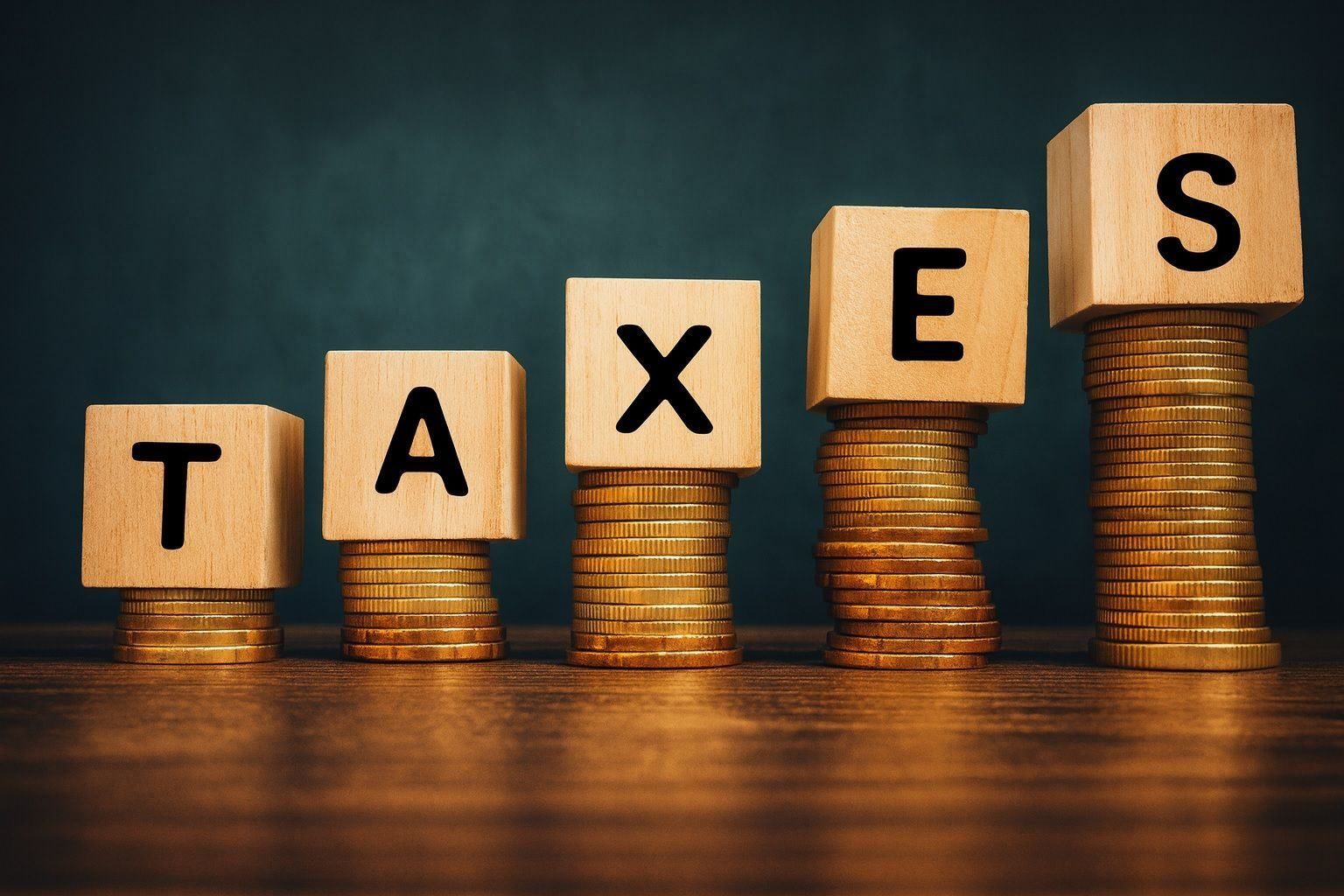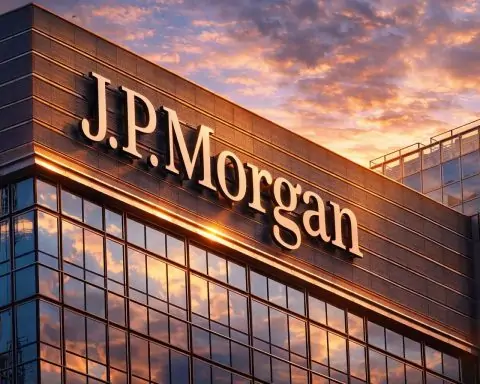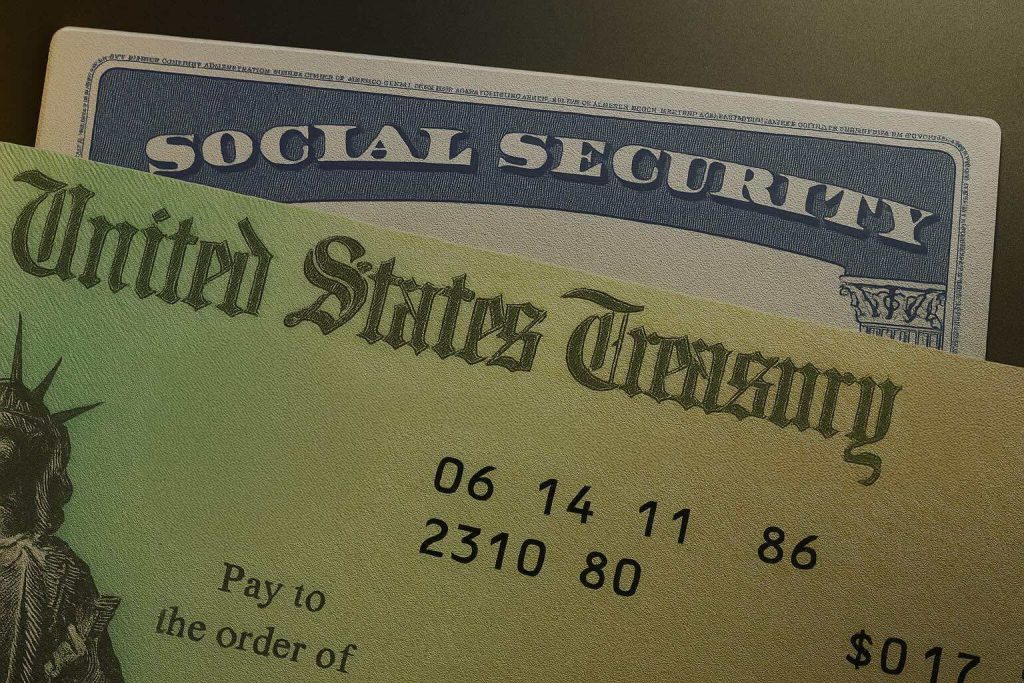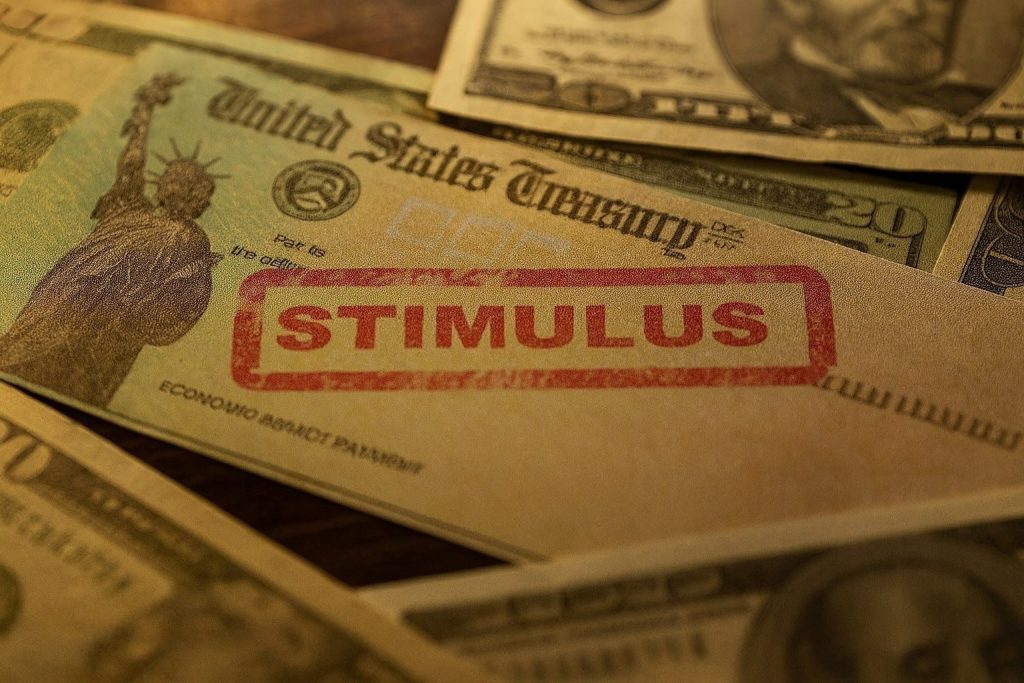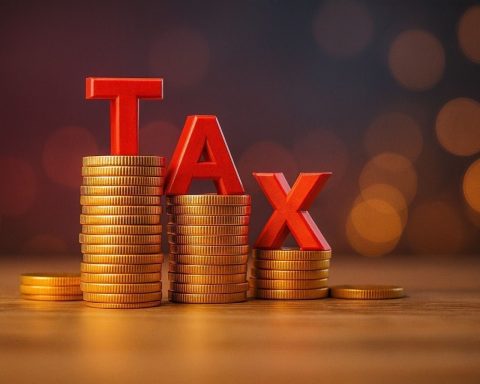LONDON – 26 November 2025 – Chancellor Rachel Reeves has unveiled a sweeping package of UK tax changes in the Autumn Budget, hours after an extraordinary blunder saw the Office for Budget Responsibility (OBR) publish key details early on its website. The leaked document confirms tax rises building to £26bn a year by 2029–30, pushing the UK tax burden to a record share of the economy. [1]
At the heart of today’s announcements are a freeze on income tax thresholds to 2030–31, a 2 percentage point hike in tax rates on dividends, property and savings income, a cut to the cash ISA allowance, and new targeted levies on property, tourism, sugar and electric vehicles. [2]
Below is a detailed breakdown of the key UK tax news from 26 November 2025 – and what it all means for households, savers and investors.
1. Budget leak drama: OBR “technical error” reveals tax rises early
Today’s fiscal event was overshadowed by a remarkable procedural failure. The OBR accidentally released its Economic and fiscal outlook online before Reeves stood up in the Commons, revealing dozens of measures and their revenue scores. [3]
The watchdog later apologised, blaming a “technical error”, while Reeves called the premature publication “deeply disappointing” and a “serious error”. [4]
From the leaked report we learned that:
- Budget tax measures raise revenues by £26bn in 2029–30, largely through freezing personal tax thresholds and a suite of smaller changes. [5]
- The overall tax take is projected to reach about 38% of GDP by 2030–31, the highest on record. [6]
- Reeves more than doubles her fiscal “headroom” against her debt rule to roughly £22bn in 2029–30, giving the Treasury a buffer if the economy underperforms. [7]
The leak also confirmed that, despite Labour’s manifesto pledge not to raise the main rates of income tax, National Insurance or VAT, the government is leaning heavily on “stealth” measures such as threshold freezes, base-broadening and targeted levies to raise cash. [8]
2. Income tax thresholds frozen until 2030–31: a long-term stealth tax
The single most consequential change for millions of workers is the decision to extend the freeze on income tax thresholds for another three years, to April 2031. [9]
Key details:
- The personal allowance stays at £12,570.
- The higher-rate threshold remains £50,270.
- The additional-rate threshold stays £125,140. [10]
Because wages and pensions are expected to keep rising while thresholds do not, more people are dragged into paying tax or into higher bands – the classic “fiscal drag” effect.
The OBR and Evening Standard analysis suggest that by 2029–30, the prolonged freeze will create: [11]
- Around 780,000 extra basic‑rate taxpayers
- Around 920,000 extra higher‑rate taxpayers
- Around 4,000 extra additional‑rate taxpayers
That’s about 1.7 million more people paying income tax or pushed into higher bands, raising roughly £8bn a year by the end of the decade. [12]
Pension specialists warn this will hit retirees particularly hard. With the state pension due to rise by 4.8% in April 2026under the triple lock, modelling cited by PensionsAge suggests up to 10 million pensioners could be paying income tax by the end of the decade if inflation and wage growth stay elevated. [13]
What it means for you:
- If your pay or pension rises between now and 2030–31, more of it is likely to be taxed.
- Some people who have never paid income tax before – especially pensioners and part‑time workers – could find themselves needing to file returns or pay via PAYE.
3. Dividend, property and savings taxes rise by 2 percentage points
Investors and landlords are also being asked to shoulder more of the burden.
The OBR documents confirm that tax rates on dividends, property income and savings income will increase by 2 percentage points across the board, starting in April 2026. The measure is forecast to raise £2.1bn in 2029–30. [14]
According to figures published via the OBR:
- The basic‑rate dividend tax will rise from 8.75% to 10.75%.
- The higher‑rate dividend tax will rise from 33.75% to 35.75%. [15]
Equivalent 2‑point increases will apply to property income and savings income, tightening the squeeze on buy‑to‑let landlords and those with significant interest or investment income outside ISAs. [16]
What it means for you:
- If you receive dividends from shares, own rental property, or have large taxable savings, your tax bill will climb from 2026–27.
- Tax shelters such as stocks & shares ISAs and pensions become even more valuable in long‑term planning.
4. Cash ISA limit cut to £12,000 for under‑66s
One of the most controversial moves, especially among savers, is a reduction in the cash ISA allowance.
From April 2027:
- The annual cash ISA limit falls from £20,000 to £12,000 for people aged 65 and under.
- Those aged 66 and over retain the full £20,000 cash ISA allowance.
- The stocks & shares ISA allowance remains at £20,000 for everyone. [17]
The Treasury’s stated aim is to encourage younger savers to invest in the stock market, channelling more capital into British companies. However, banks and building societies warn the change could reduce the funding available for mortgages and push up borrowing costs. [18]
What it means for you:
- Under 66? You’ll only be able to shelter £12,000 a year in cash ISAs, but you can still use the full £20,000 in a stocks & shares ISA.
- Over 65? The cash ISA allowance stays at £20,000, preserving flexibility for older savers.
- Big savers may need to rethink how they split money between cash, investment ISAs and pensions.
5. Salary-sacrifice pensions hit with National Insurance
Another major change targets salary‑sacrifice pension schemes, a popular tax‑efficient way for employers and staff to boost retirement saving.
Under plans revealed in the OBR documents:
- From April 2029, salary‑sacrificed pension contributions above £2,000 a year will no longer be exempt from National Insurance.
- Anything over £2,000 sacrificed into a pension will be treated as ordinary pay for NI purposes, attracting both employer and employee NICs. [19]
The OBR estimates the change will raise around £4.7bn in 2029–30 and £2.6bn in 2030–31, assuming many workers respond by switching into standard pension contributions. [20]
Industry bodies and small‑business groups had lobbied heavily against this move, warning that it would cut take‑home pay, raise employer costs and discourage pension saving, particularly among basic‑rate taxpayers. [21]
What it means for you:
- If you use salary sacrifice to boost pension contributions, your tax advantage will be capped at £2,000 a year from 2029.
- Higher earners and employees with generous workplace schemes are likely to be most affected.
- Employers may rethink reward packages, potentially reducing contributions or other benefits to offset higher NI bills.
6. Property and wealth: new ‘mansion tax’ via council tax surcharge
Property wealth is firmly in the crosshairs.
The OBR leak confirms a new “high‑value council tax surcharge” on homes worth more than £2m, widely described as a mansion tax in all but name. [22]
Key points:
- The surcharge will apply to properties valued above £2m, layered on top of existing council tax bills.
- The OBR expects it to raise around £400m in 2029–30. [23]
- Guardian reporting indicates four bands, with annual surcharges starting around £2,500 on homes between £2m and £2.5m, rising to about £7,500 for properties worth £5m or more. [24]
This is part of a wider push to update the UK’s outdated property tax system, whose council tax bands are still based on 1991 valuations. Pre‑Budget analysis from economists suggested Reeves might also consider broader council tax reform or stamp duty changes, though these have not yet materialised in full today. [25]
What it means for you:
- Owners of high‑value homes, particularly in London and the South East, face higher ongoing annual tax bills.
- There may be pressure on prices at the very top of the market as some owners downsize before the surcharge fully bites. [26]
7. New consumption taxes: sugar, tourist stays, fuel and EVs
Reeves has also leaned heavily on behaviour‑shaping taxes – targeting health, tourism and transport.
Sugar tax extended to milkshakes and lattes
Health Secretary Wes Streeting confirmed that the Soft Drinks Industry Levy (sugar tax) will be expanded to cover pre‑packaged milkshakes, flavoured milks and many ready‑to‑drink lattes. [27]
- The sugar threshold is being lowered from 5g to 4.5g per 100ml.
- Drinks made fresh in cafés and coffee shops remain exempt.
- Businesses have until 1 January 2028 to reformulate or face the higher levy. [28]
Tourist tax powers for English cities
New legislation will allow mayors in England to levy a tourist tax on overnight stays, with revenue ring‑fenced for local transport and infrastructure. [29]
This aligns England with many European destinations that already charge visitors a nightly fee.
EV pay‑per‑mile tax from 2028
Perhaps the most structurally significant change is a new mileage‑based road tax for electric vehicles:
- From April 2028, battery electric cars will be charged £0.03 per mile, and plug‑in hybrids £0.015 per mile. [30]
- The OBR expects the levy to raise around £1.1bn in 2028–29, rising to up to £1.9bn by 2030–31, partially offsetting falling fuel duty revenues. [31]
Environmental groups have long argued that, as petrol and diesel are phased out, the tax system must find a way to replace fuel duty, which currently raises tens of billions a year.
Fuel duty cut extended – for now
The OBR leak also reveals that the temporary 5p cut in fuel duty on petrol and diesel will be kept in place until September 2026, after which it will be unwound gradually. [32]
What it means for you:
- High‑sugar drinks and many ready‑to‑drink coffees will likely become more expensive from 2028 unless companies cut sugar.
- Holiday stays in English cities may attract a small additional nightly charge once local “tourist taxes” are introduced.
- Electric car drivers will start paying a direct road tax from 2028, changing the running‑cost equation versus petrol and diesel.
8. Other notable tax and savings measures
Beyond the headline grabs, several smaller but important tax changes have emerged:
- Record overall tax burden – Combined with last year’s increases, today’s measures push the UK tax take to about 38% of GDP by 2030–31, the highest since records began. [33]
- Stamp duty holiday for new London stock listings – Newly listed companies on the London Stock Exchange will benefit from a three‑year stamp duty holiday on share trading, aimed at revitalising the UK’s struggling equity market. [34]
- Two‑child benefit cap scrapped – Funded in part by the tax rises, Reeves is scrapping the controversial two‑child limit in universal credit, at a cost of around £3bn by 2029–30. [35]
- Help to Save made permanent and expanded – The government will make the Help to Save scheme permanent from 2028 and open it to an additional 1.5m low‑income workers, providing a 50% bonus on qualifying savings. [36]
9. When do the main changes take effect?
For households trying to plan ahead, the start dates matter as much as the measures themselves. Based on today’s documents and coverage:
- April 2026 – Higher dividend, property and savings tax rates begin; national minimum wage rises to £12.71 for over‑21s. [37]
- April 2027 – Cash ISA annual limit cut to £12,000 for those 65 and under; over‑65s keep £20,000; stocks & shares ISA stays £20,000. [38]
- April 2028 – Pay‑per‑mile EV road tax introduced at 3p/1.5p per mile. [39]
- January 2028 – Sugar tax extension to milk‑based and flavoured drinks comes into force. [40]
- April 2029 – Salary‑sacrifice pension NI exemption capped at £2,000; additional contributions subject to NICs. [41]
- Up to April 2031 – Income tax and NI thresholds remain frozen, cementing long‑term fiscal drag. [42]
10. Big picture: who pays, and what to watch next
Taken together, the measures announced – and leaked – today confirm that Reeves has chosen a “stealth and wealth” strategy:
- Avoid headline rises in the main income tax, NIC and VAT rates,
- But significantly increase the tax take from:
- Bracket creep (threshold freezes)
- Investors and landlords (dividends, property and savings income)
- Asset‑rich homeowners (high‑value council tax surcharge)
- Younger savers (ISA cap)
- EV drivers and tourists (new road tax and local levies)
For most households, the impact will not come from a single “big bang” tax rise, but from multiple small squeezesaccumulating over the rest of the decade.
References
1. www.theguardian.com, 2. www.theguardian.com, 3. www.theguardian.com, 4. www.theguardian.com, 5. www.theguardian.com, 6. www.theguardian.com, 7. www.theguardian.com, 8. commonslibrary.parliament.uk, 9. www.theguardian.com, 10. www.theguardian.com, 11. www.standard.co.uk, 12. www.standard.co.uk, 13. www.pensionsage.com, 14. www.theguardian.com, 15. uk.investing.com, 16. www.theguardian.com, 17. www.moneysavingexpert.com, 18. www.theguardian.com, 19. www.theguardian.com, 20. www.pensionsage.com, 21. www.pensionsage.com, 22. www.theguardian.com, 23. propertyindustryeye.com, 24. www.theguardian.com, 25. www.independent.co.uk, 26. propertyindustryeye.com, 27. www.theguardian.com, 28. www.the-independent.com, 29. news.sky.com, 30. www.reuters.com, 31. www.reuters.com, 32. www.standard.co.uk, 33. www.theguardian.com, 34. portfolio-adviser.com, 35. www.theguardian.com, 36. www.moneysavingexpert.com, 37. uk.investing.com, 38. www.moneysavingexpert.com, 39. www.reuters.com, 40. www.the-independent.com, 41. www.pensionsage.com, 42. www.ftadviser.com
